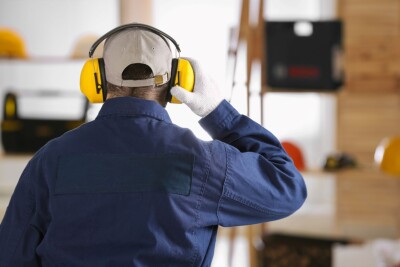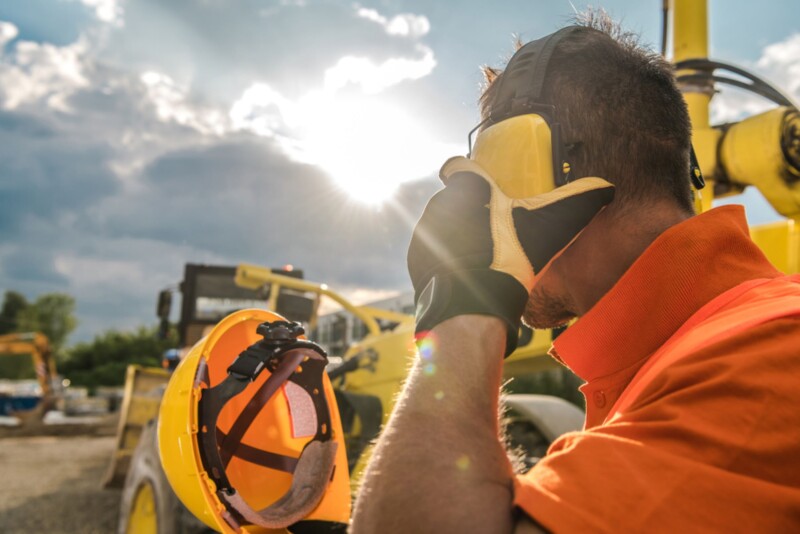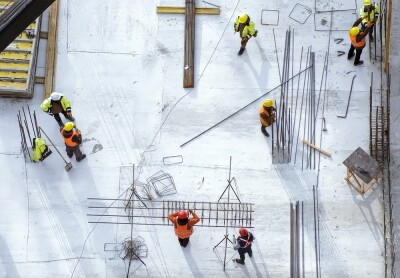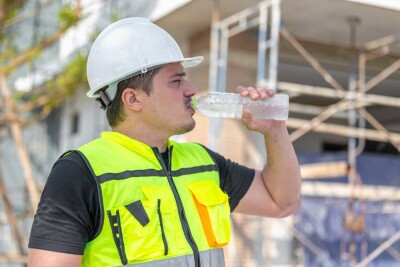Construction jobsites are known contributors to environmental waste, including environmentally hazardous emissions, dust, and other pollutants that can be hazardous to human health, even resulting in land degradation — urging companies to adopt sustainable construction practices to better control their environmental impact.
But a lesser-discussed pollutant that’s equally hazardous to human occupants of nearby communities is sound pollution.
In this article, I look toward understanding the impact of sound pollution on jobsites, how it affects human and other ecosystems, and how we might address it to curb its effects.
The Impact of Sound Pollution on Jobsites
Scholarly research has explored the impact of sound pollution on construction sites:
The Impact on Human Health
One such study in Sustainable Cities and Society examined the physiological response (e.g., heart rate parameters, Respiratory Rate, and Electrodermal Activity) to exposure to construction noises.
Scholars looked to explore the effects of construction noise—exposure to saws, jackhammers, pile drivers, and bulldozers—to understand its impact on human health, and they found significant effects of construction noise on heart rate parameters. As well, they observed worsening effects with exposure duration.
Additional research over a span of 15 years has unpacked the impact of construction noise pollution on city dwellers experiencing urban development, while more recent research has explored its particular toll during isolation in the pandemic.
An additional study of “The Factors and Effects of Noise Pollution” at a construction site in Klang Valley in Malaysia found the occurrence of noise pollution to worsen due to the area being in the process of urban development (prolonged exposure over multiple years).
The Impact on Human Workers
The same Malaysian study found noise pollution to disproportionately affect and cause harm to the health of those involved in these construction projects, often staying at the jobsite for long periods experiencing prolonged exposure to noise pollution that respondents reported to affect sleep quality.
An extensive literature review from the Electronic Library of Construction Occupational Safety & Health (escosh) lists many additional hazardous effects, such as hearing loss, while another study lists hearing loss, blood pressure, sleeping trouble, and awful stress among its negative impacts of “surplus noise” on construction sites.
The Impact on Ecosystems and Biodiversity
Aside from impacting human workers, additional research has explored the role noise pollution has in impacting ecosystems and biodiversity, particularly among coastal cetaceans to the construction of offshore wind turbines.

What Cities Can Do to Limit Noise Pollution in Urban Development
Common sense noise ordinances established by local governments limit otherwise unreasonable construction noises during certain hours. For example, the City of Madison, Wisconsin allows “Use of construction equipment [...] between the hours of 7:00 am – 7:00 pm, Monday – Saturday and 10:00 am – 7:00 pm on Sunday. ”
New ordinances might address shifting trends and force majeure events like:
- A changing workforce global (e.g., more remote workers, if still minority, and more common, more statistically relevant hybrid workers
- God forbid, future global pandemics like the one Bill Gates warned us about and we were miserably unprepared for
Ordinances to address reshaping needs like these might adopt a rotating noise ordinance to stipulate certain weekdays to be protected, allowing hybrid and remote workers to choose where they conduct their business carefully based on the day of the week.
What Manufacturers Have Done to Reduce Noise Pollution
Many manufacturers have done a great deal to improve jobsite safety by electrifying once-gas and pneumatic categories that were both hazardous to workers and the environment via emissions (gas, sound) and unwieldy to use, producing excessive vibration and safety risks.
Disruption in the cordless power tool space has delivered tools like impact drivers that deliver a two times quieter installation experience with less vibration and a compact size, making it easier to use in tight spaces while less prone to noise pollution.
Innovations in battery technology have allowed cordless power tool manufacturers to learn and apply similar technology to the equipment space, as seen by entries like Milwaukee Tool’s MX FUEL™ and more recently DeWalt’s Powershift™ that have turned heavy jobsite equipment like jackhammers, coring drills, and even gas generators into battery-powered, low-noise, and vibration-reduced machines that are easier, safer, and quieter to use.
What Manufacturers Can Do to Reduce Noise Pollution
EVs remain a hard nut for the industry to crack.
Well-known construction equipment companies like Case, Caterpillar, Bobcat, and John Deere (as well as many others – see Equipment World coverage) have released electric versions of their oftentimes diesel counterparts (either as concept vehicles or prototypes). As Equipment World relays, only a handful of fully electric models have made it from prototype to full production.
Manufacturers should continue to put research into these categories, particularly in hybrid technology – consider how many auto manufacturers have put the pause button on EV development in favor of hybrid technology, the latter which is more viable in terms of consumer adoption and infrastructure challenges.
Toyota’s hybrid-first strategy has been a winning one, and hybrid technology has vastly improved over the years, a possible way for the industry to reduce its environmental footprint while making these vehicles more viable from a cost and technological standpoint.
What Construction Companies Can Do to Protect Workers from Noise Pollution
Companies can and should protect their workers through safety programs that teach about the common hazards experienced on jobsites, among them noise pollution. Companies should require the use of safety protection, including PPE like safety helmets to protect workers from “struck by” events and falls, as well as hearing and eye protection.
Additional education may include mandating that, should workers choose to wear ear buds in place of standard hearing protection, these ear buds be Jobsite Earbuds – specially designed for construction settings, these ear buds include “Jobsite Aware” situational awareness to simultaneously protect workers from intense external noises on jobsites while making them spatially aware to the noise they need to hear to safely perform their work (unlike other noise canceling ear buds that could potentially pose a risk to drowning out all noise).






